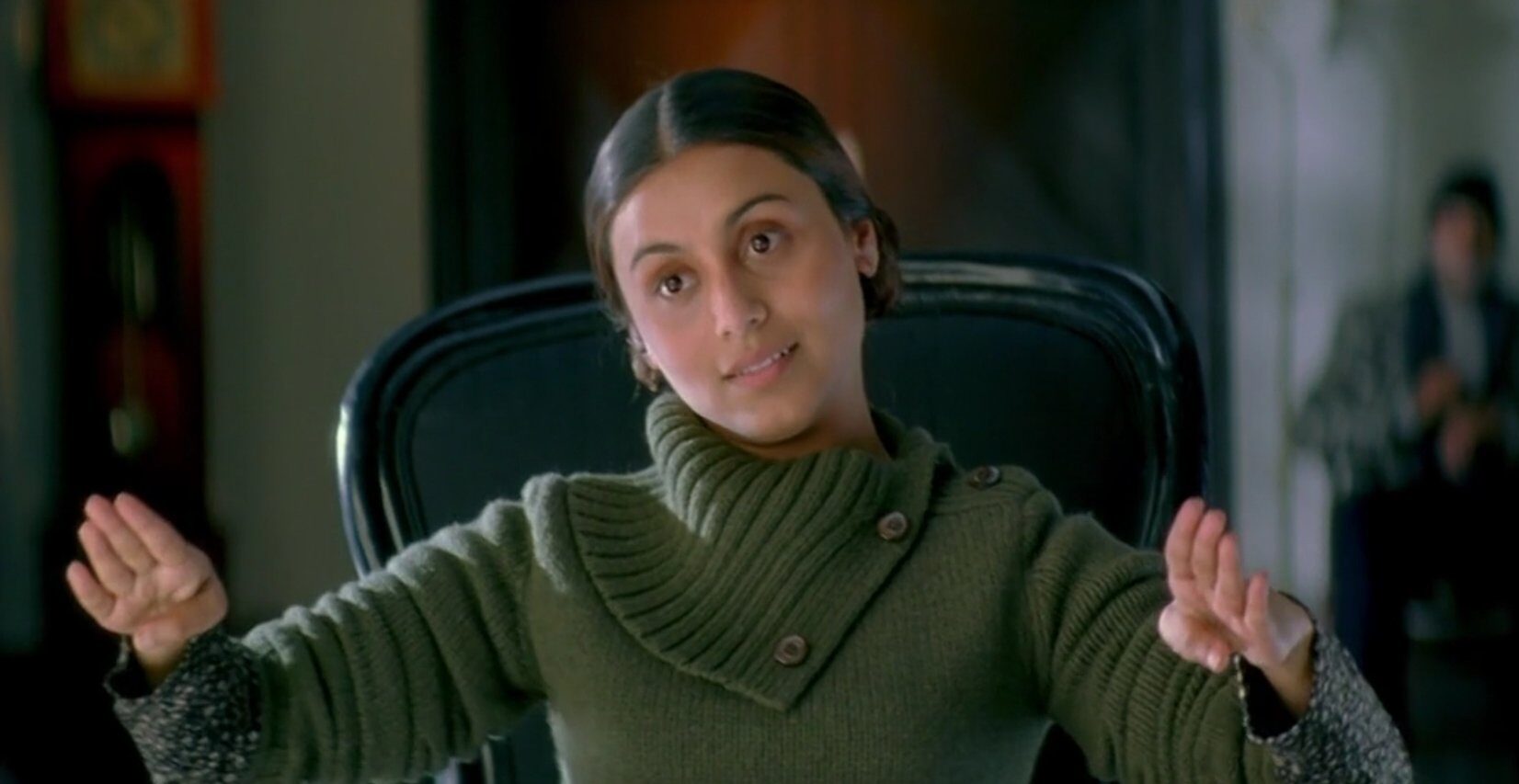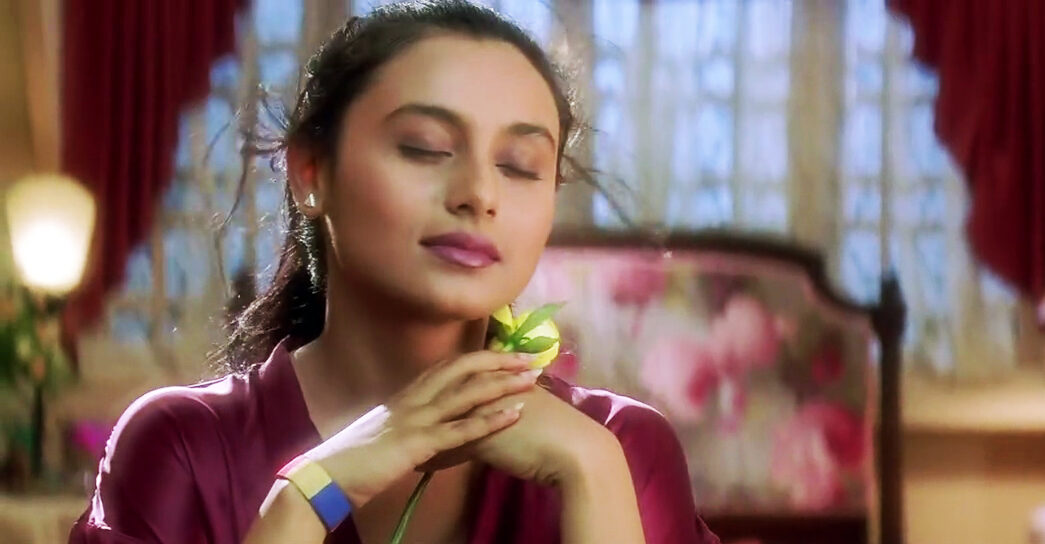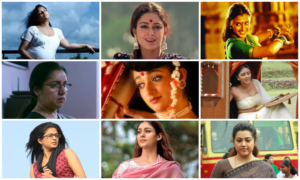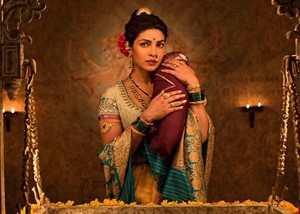
On Sunday, 26th November, I had the pleasure of listening to Rani Mukerji live for the third time in 2023. At the 54th International Film Festival of India, Goa, the actor engaged in a freewheeling conversation with eminent film critic Baradwaj Rangan. One that ran for about 45 minutes, it was too crisp a session to discuss the actor’s stunningly versatile repertoire. Mukerji has had the variety, the box office power, and a time-tested sway with the viewers and the media.
To give the moderator due credit, the questions were intelligent and meticulous enough to focus solely on the actor’s body of work. For a fact, we would know they were coming from an individual who understands the grammar of Indian cinema and its unique syntax of acting. The conversation – along with a bunch from the audience – made me realize how Mukerji’s filmography is far more diverse than any of her contemporaries and, arguably, her predecessors and successors in Bollywood’s mainstream realm.
Rani Mukerji spoke at length on why she chose to do Hum Tum (2004). It was a story centered around a woman who does not allow a night of lovemaking to change the course of her life. Kunal Kohli’s film was a critical and commercial success and its progressive subject feels fresh to date. Speaking of progressiveness, Mukerji cheekily quoted how there were many divorces post Karan Johar’s extramarital drama Kabhi Alvida Naa Kehna (2006) – a multi-superstar vehicle that made a generation and their parents squirm in their seats for speaking certain unpleasant truths.
When Rangan quizzed her about Amol Palekar’s Paheli, a relatively overlooked gem, Mukerji turned eloquent on how the folk tale set in medieval times, again, is about a woman making a difficult choice. If the Shah Rukh Khan production was a lot about Mukerji internalizing the protagonist’s plight, Rangan was quick to mention her physically exhausting effort in Dil Bole Hadippa. “It is one my most underrated performances,” replied the actor and I couldn’t agree more. Yes, the film did not have a wattage to supplement her enthusiasm to play a popular sport on camera (that too in dual roles), it was a daring attempt, nonetheless, for a top female actor from her generation.
Then we heard about Black (2005) – a film that raised the bar for Mukerji as well as her contemporaries. The actor, while praising the filmmaker Sanjay Leela Bhansali, confessed how the film (along with Hichki in 2018) helped her evolve into a better human being. The duo also fleetingly discussed Mani Ratnam’s Yuva (2004) which is yet another landmark performance by the actor along with Shaad Ali’s Bunty Aur Babli (2005), a trendsetting comedy.

Rani Mukerji is one of the rare actors in Indian cinema with shapeshifting abilities. Whether the skill is innate or it is nurtured with relentless practice, one wouldn’t know. Yet, the versions of Mukerji that you would see in two adjacent releases are never the same. The bigger surprise came in late 2012 when Sachin Kundalkar’s Aiyyaa and Reema Kagti’s Talaash were released back-to-back. If Mukerji was a hoot and a half in the former as a middle-class Maharashtrian girl with filmy fantasies and swoon-worthy dances, we saw her metamorphose into a bereaving mother in the latter. It wasn’t just the outfits and makeup that changed. They are so cleverly calibrated that it’s impossible to believe it’s the same person blasting the roof off in the spicy ‘Dreamum Wakeupum’ right before shedding copious tears in the noir thriller. In hindsight, Mukerji’s performances in these films also happen to rank among her career best.
Rani Mukerji, interestingly, essayed the famous stock character of a ‘prostitute with a heart of gold’ thrice in her career. Even though the characterizations are a lot different, one wouldn’t spot a speck of similarity between Mangal Pandey – The Rising, Laaga Chunari Mein Daag, and Saawariya. Plus, Mukerji excelled in two films based on marital discord – Saathiya and Chalte Chalte – released within a gap of six months. Despite obvious similarities in the story progression and culmination, they showcased vastly different facets of the actor.
Baradwaj Rangan also pointed out how Rani Mukerji is the only Bollywood female actor with a franchise to her credit. Mardaani – conceived by Gopi Puthran and the late Pradeep Sarkar – is a police procedural that worked at the box office making way for a sequel that emerged as a bigger success. Speaking of numbers, the market value of a female actor in Indian cinema, traditionally, is known to dip once they hit their 30s or when they get married. Sexist as it is, the trend is the opposite for the male actors. However, with the advent of streaming channels, it is heartening to see several of the talented leading ladies from the 90s and the 2000s return in full force. Rani Mukerji, even in this respect, chooses to be different. Yet to make her digital debut, delivered a string of hits after marriage and childbirth. Mardaani, Hichki, and Mardaani 2 – produced by her husband Aditya Chopra’s Yash Raj Films (YRF) – were bonafide solo successes and they came sans a conventional male lead opposite her. Dismantling the mild accusation of her exclusivity to her home banner, Mukerji delivered a rare post-pandemic theatrical success in Mrs. Chatterjee vs Norway for Emmay Entertainment and Zee Studios.
Rani Mukerji began her career in 1996 with her father Ram Mukerji’s Biyer Phool in Bengali and Ashok Gaikwad’s Raja Ki Aayegi Baraat in Hindi. If the Bengali film remains a highly watchable love quadrangle, it was her fire-spitting act in the semi-appalling Hindi debut that grabbed the crucial eyeballs. In 1998, Vikram Bhatt’s Ghulam skyrocketed Mukerji to become Bollywood’s latest pin-up girl despite the poor dubbing by a professional voice artiste. In a few month’s time, Karan Johar’s blockbuster debut Kuch Kuch Hota Hai made her a national sensation and the actor never looked back.

As Mukerji’s Tina remains iconic with generations of film lovers showering affection on the empathetic campus hottie, I recall a recent statement made by the filmmaker in his popular web show ‘Koffee with Karan’ wherein he hailed the guest Kareena Kapoor Khan as the most consistently relevant female superstar post-Sridevi. While it sounded appropriate as a compliment in the setting they were in, the statement is far from true. With due respect to Kapoor, her proven histrionic abilities and star power, the word ‘relevance’ does not quite sync with her cinematic merits considering how her equity as a solo star remains unproven at the box office.
If we look back, the lack of a senior female actor delivering hits post-marriage and motherhood was a void filled by Sharmila Tagore and Hema Malini. The trend dipped in the mid-80s with less substantial parts being written for women. Rani Mukerji is the only actor in contemporary times to have broken the pattern and continuously so with rare commercial misfires in her filmography.
The bottom line is that people do buy tickets to watch Mukerji on the big screen. As Rangan fleetingly mentioned, there exists a brand in her name. The brand is a byproduct of 27 years of consistent quality, friendliness with the media, gratitude towards the paying public, and, perhaps, a conscious decision to stay away from social media.
Having said that, Rani Mukerji is an appropriately rated actor. One cannot claim that her best is yet to come. If I consider Aiyyaa to be her best work to date, someone else would give that label to Black or No One Killed Jessica. What is left for the superstar actor to achieve is to collaborate with veterans and venture into language cinema. With not a single thing left to be proven, may the lady go out and have all kinds of fun on the celluloid.
ALSO READ: 10 Performances by Rani Mukerji That Are Grossly Overlooked

